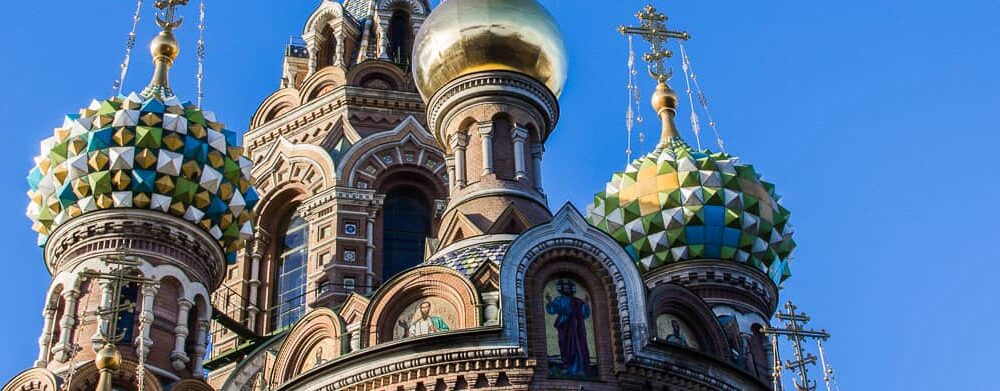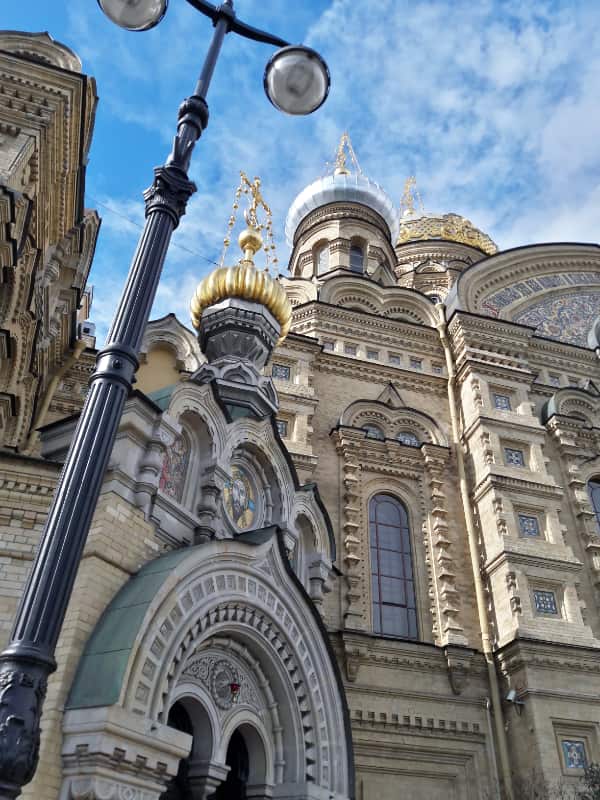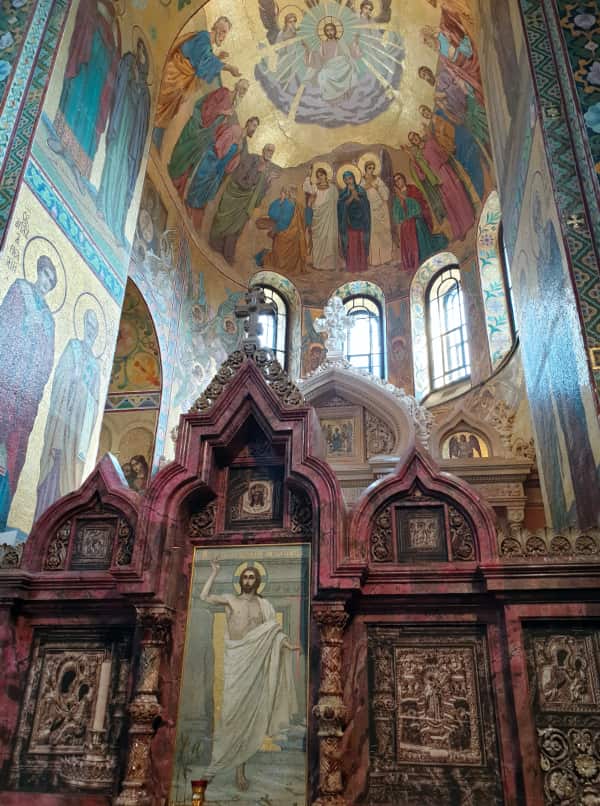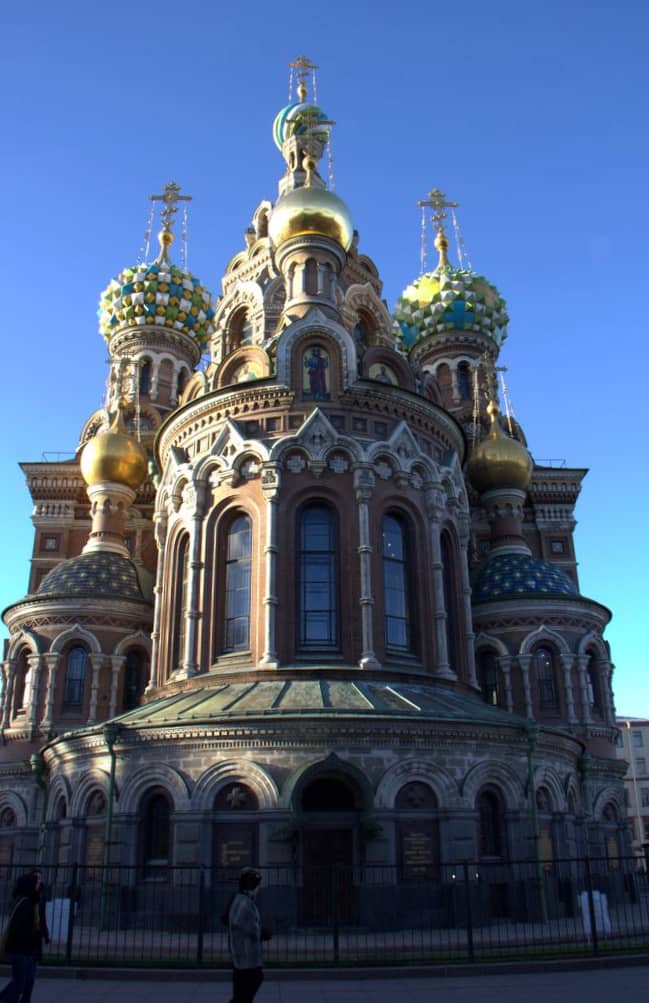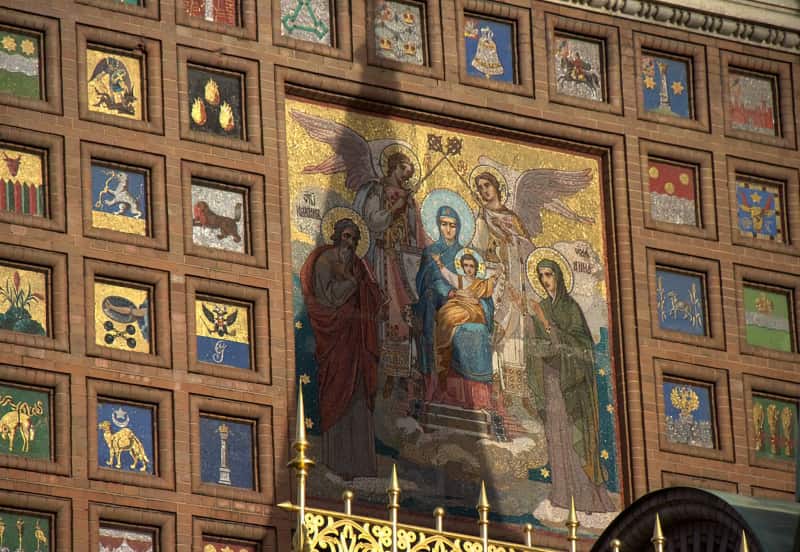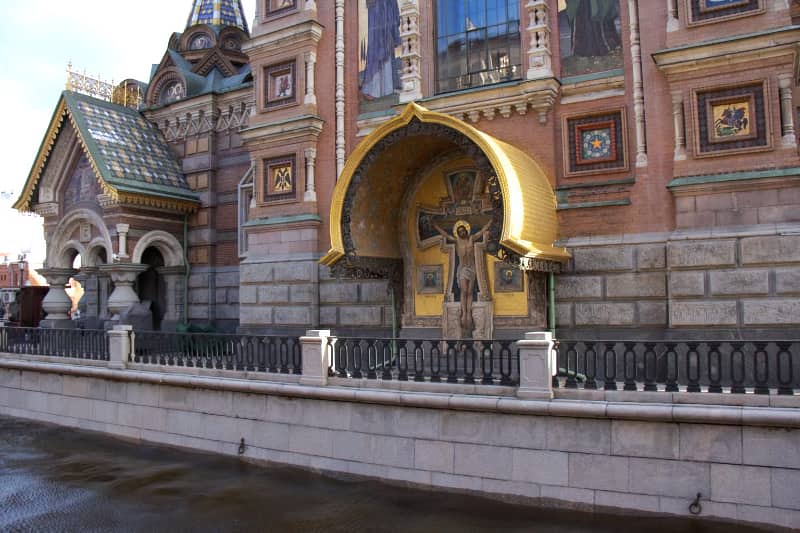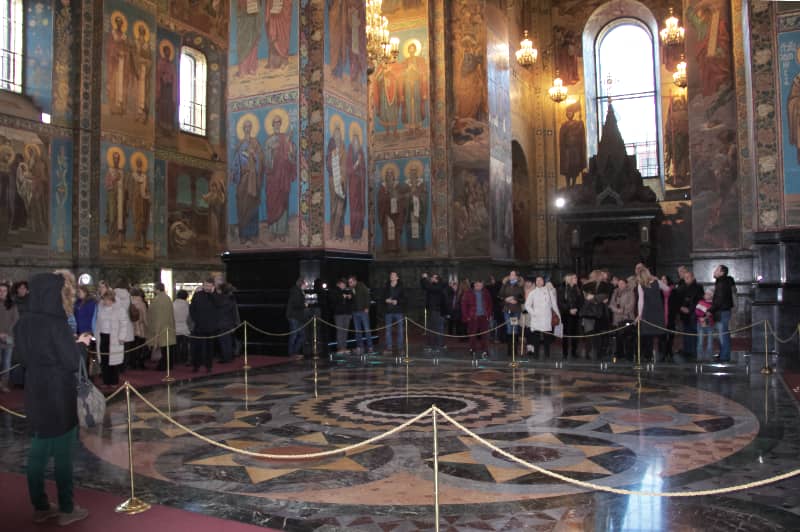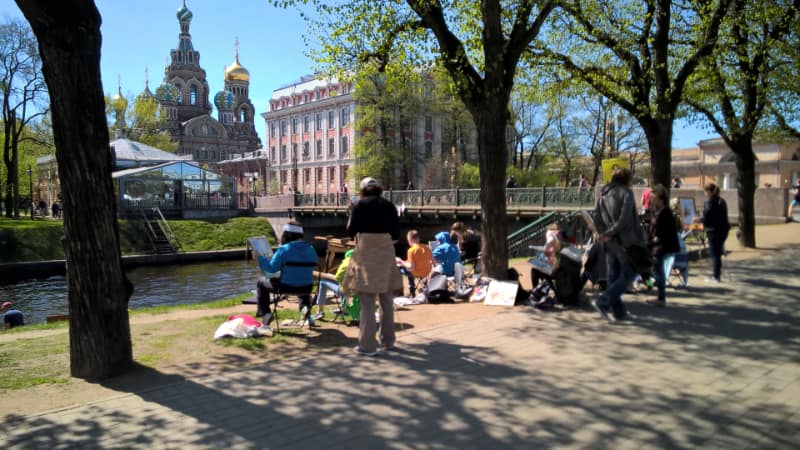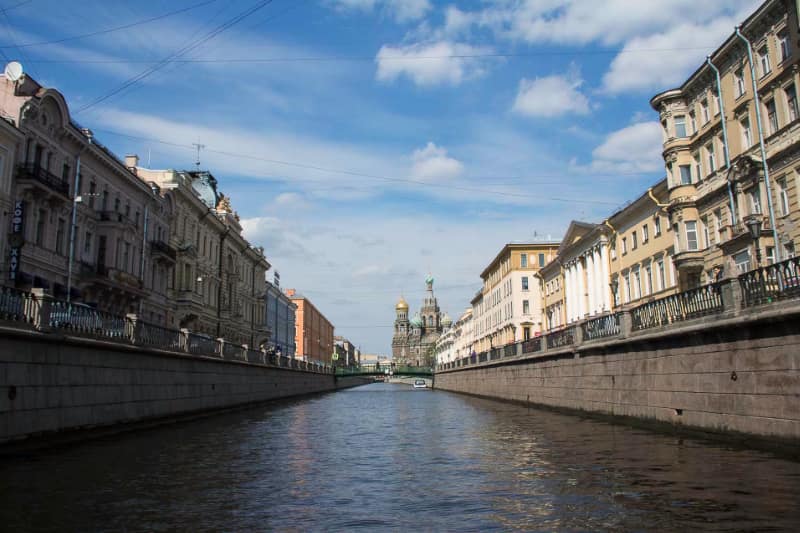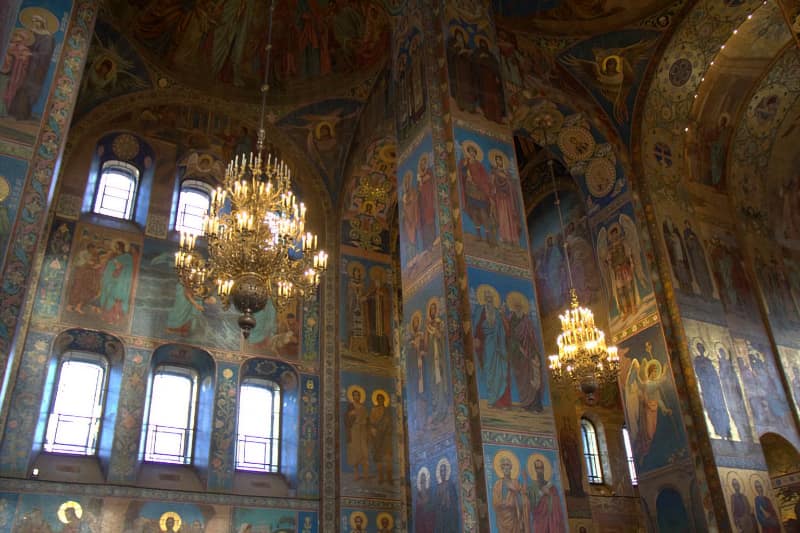Resurrection Cathedral is one of the most picturesque and attractive landmarks in St. Petersburg. In different guidebooks you can come across a more common name acceptable among the locals – Church of Spilled Blood or other name variations having “spilled” and “blood” in them. Such a tragic name is due to the terroristic act that served the reason why the church was actually built. Alexander II, nicknamed as “Liberator Tsar” was lethally wounded on this place. Among the reforms and historic events of his rule the most important ones are the emancipation of the serfs in 1861 and the conquest of Central Asia. People revered and were thankful to the Liberator Tsar, so they started bringing flowers and icons to the assassination spot.
Church of Spilled Blood: Construction
The next day after the tragic event the City Council offered to build a memorial chapel on the spot, but Alexander’s son (who was to be crowned as Alexander III) preferred a church. A temporary chapel was put up, while a competition for the best project was going on. All in all, there were 3 competitions conducted – it was extremely difficult to meet the wishes of the new tsar. He rejected all the projects of prominent Russian architects of the day. But finally, the choice was made.
The winning design, in the Russian Revival style favoured by the tsar himself, was a result of harmonious collaboration of architect Alfred Parland and Ignatiy Malyshev, a hieromonk of a local monastery.
In October 1883, two years after the tragic event the foundation stone for the memorial church was laid. It took 24 years to construct this architectural masterpiece:
- 3 years took stabilization and foundation mattress works;
- 14 years were needed to complete the walls, vaults and domes;
- 10 years were spent for the artistic decoration.
In 1907, in the days of Nicholas II, Resurrection Cathedral was finished and consecrated.
The rich décor of Church of Spilled Blood is eye-catching:
- Colourful Roman and Florentine mosaics cover the space of 7000 m². One can see mosaic panels on the façade, but inside it’s bizarre: every inch is covered with mosaics;
- Over 20 varieties of Russian precious and semiprecious stones embellish the edifice;
- Jeweler’s enamel was used to cover the 1000 sq.m. surface of the 5 domes;
- Glazed ceramic tiles enliven the façade;
- Brick colour ranges from pink to deep chocolate;
- 20 dark red plaques of Norwegian granite are engraved in gilt letters with the most prominent events of Alexander II’s reign.
Museum’s website
Resurrection Cathedral
Spilt Blood Church: History
The history of this church is anything but simple. In its 100 years history, it had limited access for 10 years and was completely closed for 68 years. It withstood revolutions and war and was doomed for destruction, but nevertheless it’s still there, bright and shining again.
After the consecration and for almost 10 years on majority of the Russian Empire subjects wouldn’t be able to visit it. People had to have special passes to enter, and predominantly those admitted would be royalty and nobility. The services were held only in memory of the fallen emperor.
The revolutionary 1917 introduced changes to this status: Church on the Blood became a regular parish church open to everybody. People started to have baptismal and wedding services here.
In 1930 the church was closed. By the way, all this beauty had a good chance not to survive till our days: the Soviets raised a question on its demolition twice. Church of Spilled Blood was slated for destruction, but because of WWII and the Siege of Leningrad the destruction plan was never implemented.
During the war, it was used as a mortuary, and after the was theatrical decorations were stored inside. Only as late as the end of 1960s Resurrection Cathedral became part of St. Isaac’s museum complex and the large-scale restoration project was launched.
Colourful Roman mosaics on the walls, exquisite flooring in Florentine mosaic technique, rich choice of semi-precious stones and gems – the breathtaking beauty and skillful craftsmanship never fails to impress the visitor. Add Church on Spilled Blood tour to your St. Petersburg itinerary and it will be a highlight!
In 1998 Church of the Resurrection was reopened as a museum. However, the restoration works are still in progress. Every year visitors can see new elements of the decoration recreated. The Museum of Stone, located in the former sacristy, features all stages and techniques of contemporary restoration of the Spilled Blood Church.
It’s easy to arrange a tour of Church on the Blood.
Church on the Blood is included in such ready-made tours as

